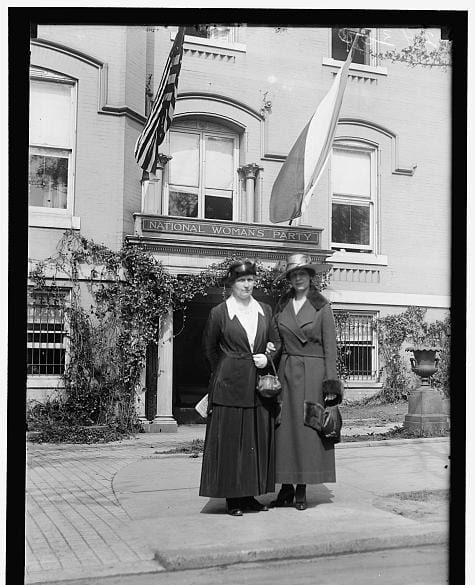


Next Document
Father Blakely States the Issue
July 29, 1916
Conversation-based seminars for collegial PD, one-day and multi-day seminars, graduate credit seminars (MA degree), online and in-person.

From the colonial period forward, women, with or without the vote, had been involved in politics. Women supported or opposed the Revolution through their toil, words, and sacrifices. Women who owned property could vote in a few states for a while. But even without the franchise, women attended rallies, created organizations that aimed at helping underprivileged women and children, and joined reform movements that ranged from abolishing alcohol to ending the scourge of slavery. In 1872, Victoria Woodhull became the first female candidate for president, although she was arrested for trying to cast a vote for herself. The Prohibition Party actually included women at their conventions.
The National Woman’s Party (NWP) had its origins in 1912 when Lucy Burns and Alice Paul were appointed to the National American Woman Suffrage Association’s congressional committee. These two women had firsthand experience with the successful use of aggressive tactics such as picketing and public marches by the British suffrage movement and wanted to adopt many of those radical approaches in the United States. In 1914, Alice Paul led a breakaway movement from the NAWSA to form the Congressional Union to pressure the Democratic Party to secure women’s right to vote. In 1916, the CU was renamed the National Woman’s Party. In June of that year, Paul and a group of like-minded women organized at Chicago’s Blackstone Theatre with the goal of creating the first women’s political party. Their intention was to distinguish themselves from the existing political parties, and they adopted a platform of one plank: the immediate passage of a federal woman’s suffrage amendment. In 1920, their objective was achieved, with the adoption of the Nineteenth Amendment.
ADOPTED by a CONVENTION
of WOMEN VOTERS assembled
in the Blackstone Theatre, Chicago
on June 5, 6, and 7, 1916
Miss Anne Martin, Nevada, Chairman
Miss Ella Abeel, Illinois, Secretary
THE National Woman’s Party stands for the passage of the amendment to the United States Constitution known as the Susan B. Anthony amendment, proposing an amendment to the Constitution of the United States extending the right of suffrage to women:
Resolved by the Senate and House of Representatives of the United States of America in Congress assembled (two-thirds of each House concurring therein), That the following article be proposed to the legislatures of the several states as an amendment to the Constitution of the United States, which, when ratified by three-fourths of the said legislatures, shall be valid as part of said Constitution, namely:
Article—Sec. 1. The right of citizens of the United States to vote shall not be denied or abridged by the United States or by any state on account of sex.
Sec. 2. Congress shall have power, by appropriate legislation, to enforce the provisions of this article.
The National Woman’s Party, convinced that the enfranchisement of women is the paramount issue, pledges itself to use its united vote to secure the passage of the Susan B. Anthony amendment, irrespective of the interests of any national political party, and pledges its unceasing opposition to all who oppose this amendment.
NATIONAL WOMAN’S PARTY
National Headquarters, Lafayette Square, Washington, D. C.

Conversation-based seminars for collegial PD, one-day and multi-day seminars, graduate credit seminars (MA degree), online and in-person.